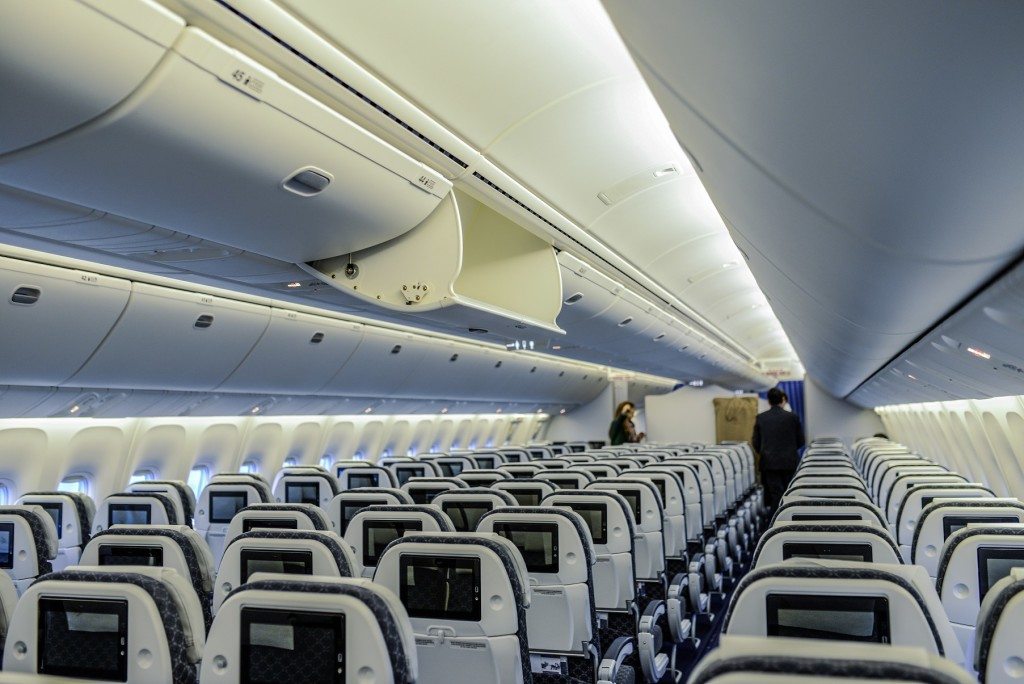The little TV screens on the back of the headrest on every seat on many commercial planes are awesome. Many flights also provide in-flight Wi-Fi and/or an ability to stream content from an onboard passenger network to your own personal mobile device. The entertainment options are awesome, but might also be putting flights and passengers are significant risk.
I know I’m dating myself but I do recall a time when your only options during a flight were a paperback book or maybe a magazine of crossword puzzles you picked up from the airport book store. The up side was that this was also back when airlines routinely provided food and a free movie during flights–but those days are long gone on most airlines.
The major airlines provide a variety of entertainment options now–for a fee. One security researcher has apparently discovered, though, that the passenger network is capable of providing access to the flight controls and avionics, making it possible to hack the plane and put it in danger through the entertainment system.
I wrote about the controversy and some insight from security experts in this blog post:
A controversy has erupted over claims that a security researcher hacked the avionics systems of a commercial airline through its in-flight entertainment system. Many security experts dismiss the story as simply ludicrous, but some believe it’s possible—and that is cause for very serious concern.
I can understand why security experts jump to the conclusion that the story is BS. I’ve been a CISSP-ISSAP for 13 years. Prior to making the switch to full-time tech analyst and writer I worked in the trenches as a security consultant. I agree completely that anyone who knows anything about networks or network security should know better than to put the flight controls and avionics on the same network as the passenger-facing entertainment system. It’s insane.
It seems safe to assume that whoever airplane manufacturers or commercial airlines employed to architect and implement the network infrastructure knows a thing or two about network infrastructure. Logically, this leads to the assumption that nobody put in charge of designing the network infrastructure of a commercial aircraft would in any way connect or merge the network architecture of the passenger systems with the flight controls.
Unfortunately, as security experts dig deeper into this debate they are discovering that it may actually be possible.
“While it is known that Chris Roberts used a modified Ethernet cable to hack into the entertainment system on commercial airlines multiple times, it is unclear how far he actually was able to laterally move through the systems,” says Morey Haber, VP of Technology for BeyondTrust. “Reports claim he was able to modify the engines thrust causing airplane movement but that may have just been coincidental turbulence. That is truly unknown until more details (if ever) are released.”
JJ Thompson, founder and CEO of Rook Security, delved into patent diagrams and data bus specifications for onboard flight systems and came away with some alarming conclusions. “I am concerned that a connection could be made from the passenger seat / inflight entertainment (IFE) via the onboard router to the open data network domain and onto the flight deck and / or avionic domains if the system routers and firewalls are misconfigured. The FBI cyber task force needs to be given full access to conduct an investigation into this matter immediately.”
“I had a chance to actually read through some of the FBI request for search warrant that details the investigation,” explained Grayson Milbourne, security intelligence director for Webroot. “Based on reading this, I think there is a more than likely chance that Chris Roberts was in fact able to hack into these planes.”
You can read the full article–including thoughts on Roberts methods and public disclosure–at CSOOnline: Are commercial planes in danger of being hacked?
- AI Voice Clones and Mobile Phishing: The Cyber Threats You’re Not Ready For - July 11, 2025
- Rethinking Cloud Security for the Evolving Threat Landscape - July 11, 2025
- Why Data Security Is the Real AI Risk - June 30, 2025




Comments are closed.